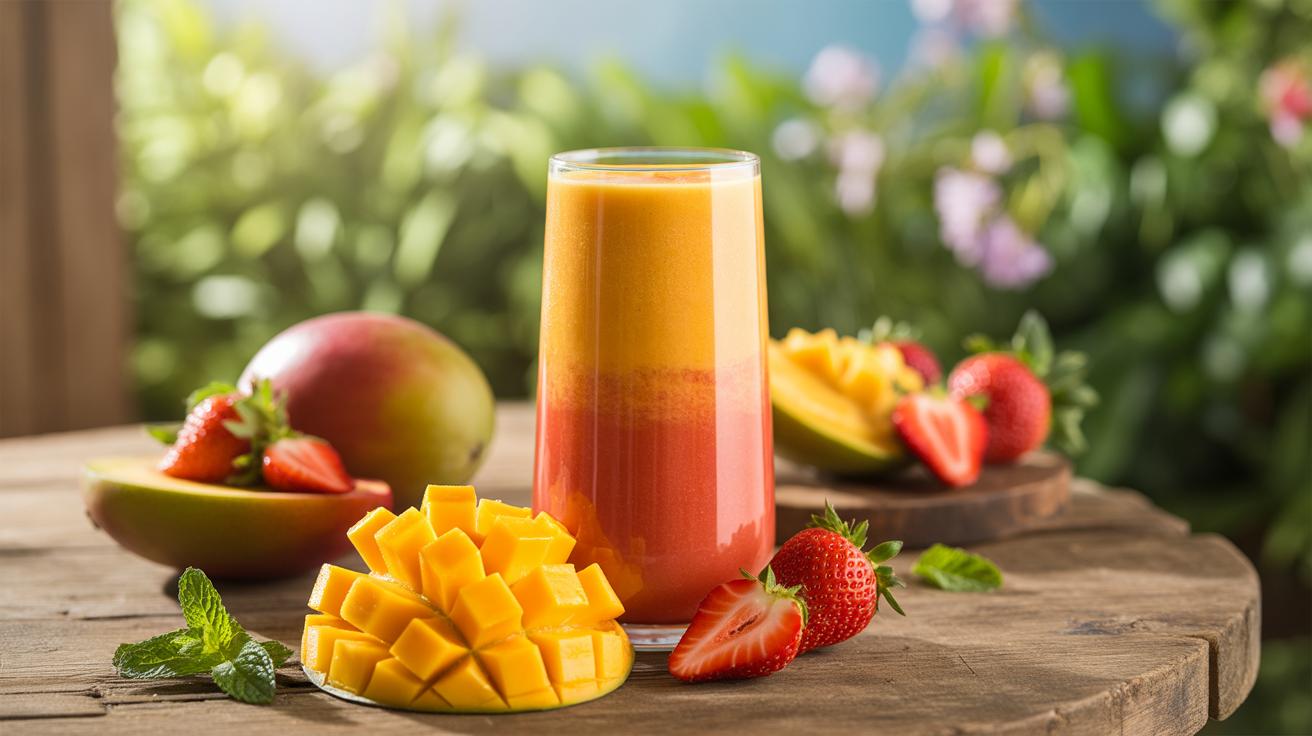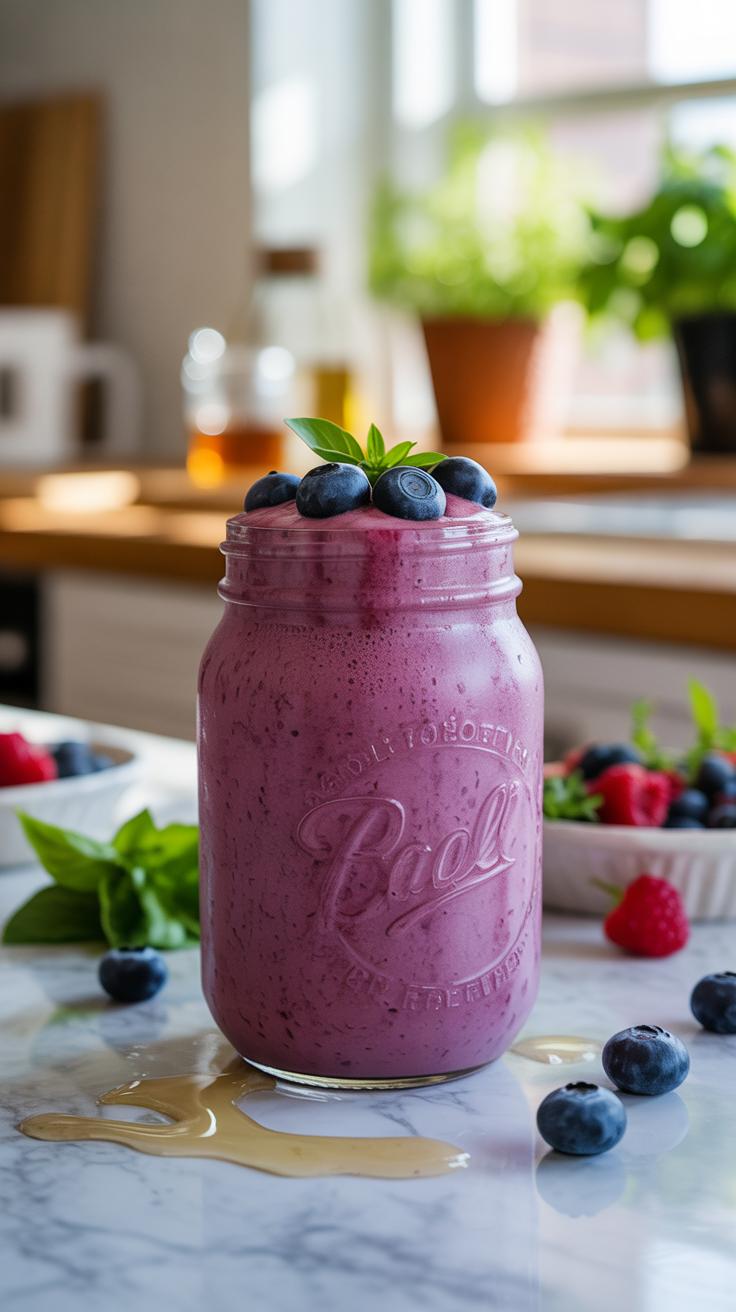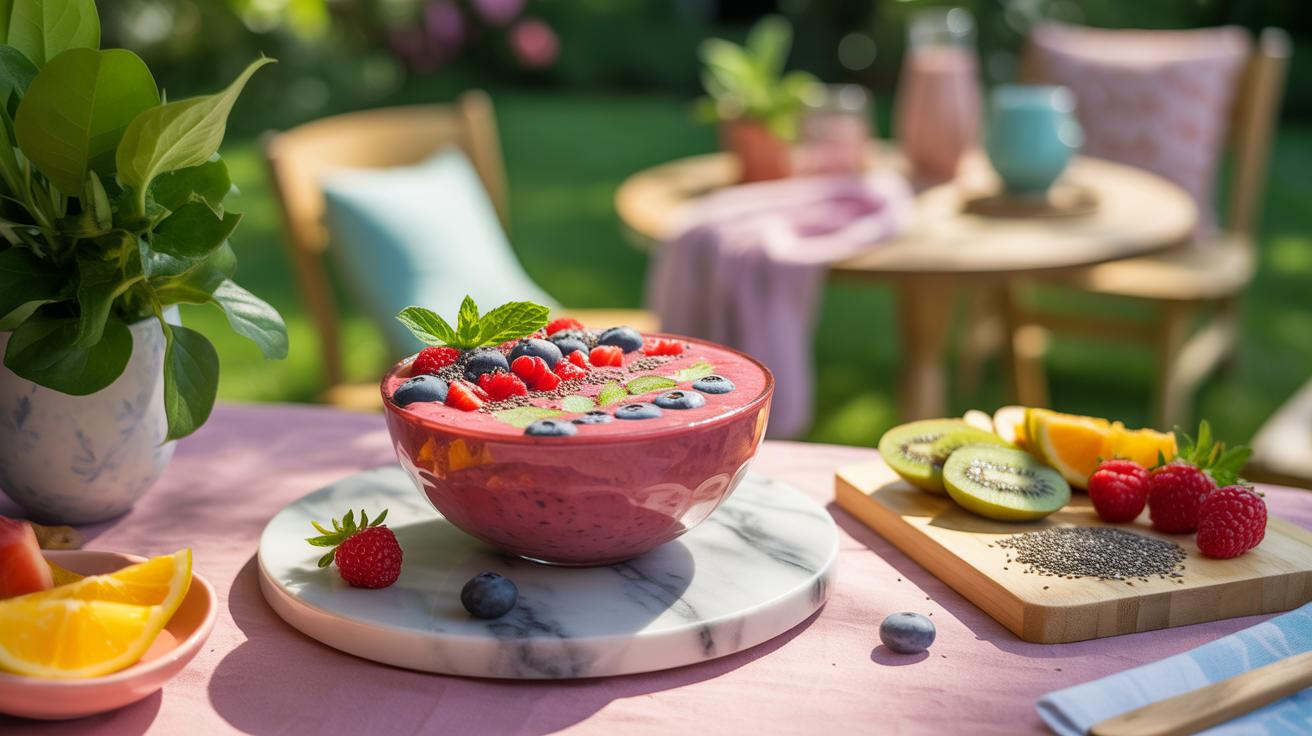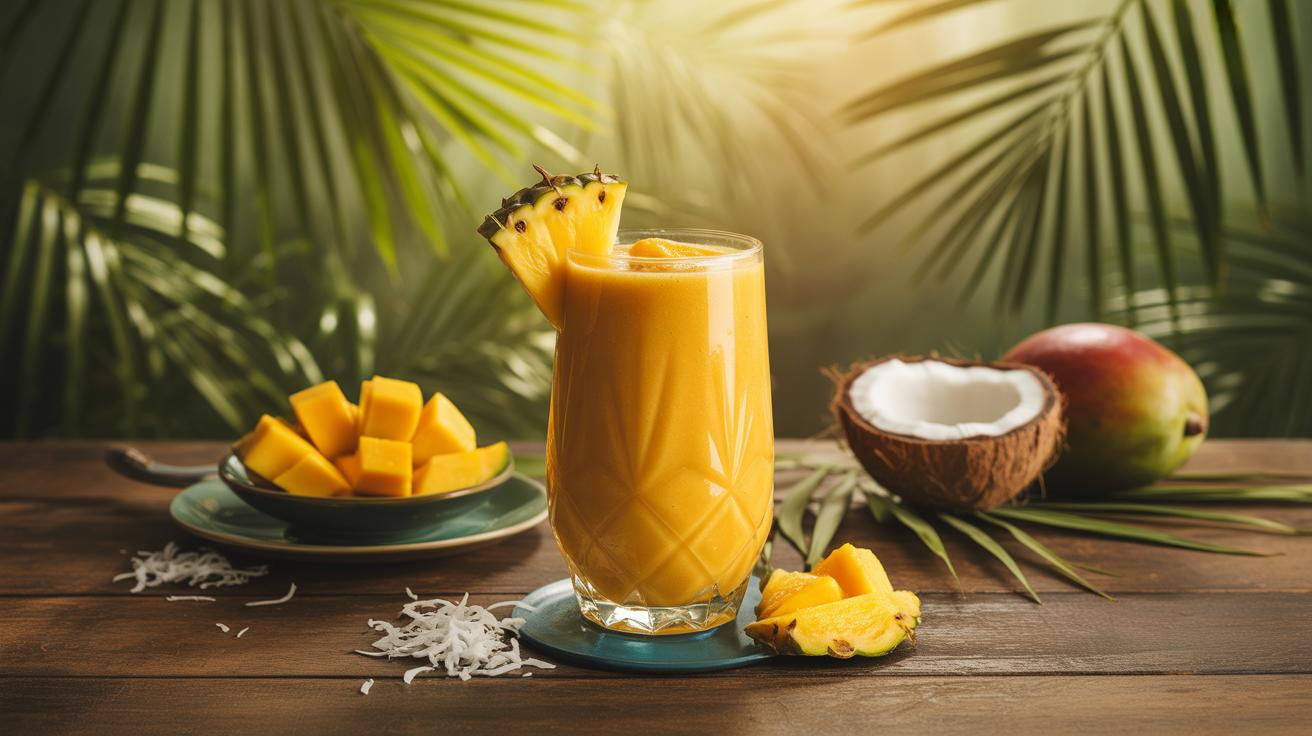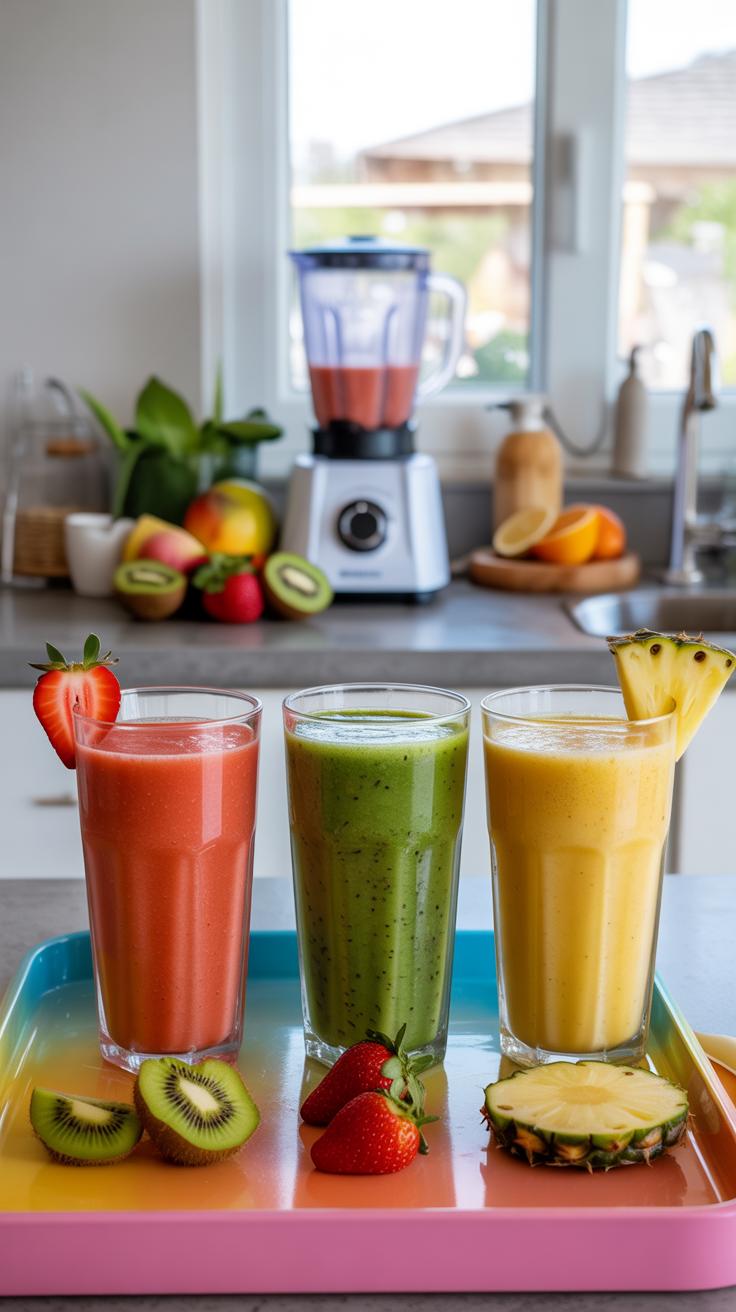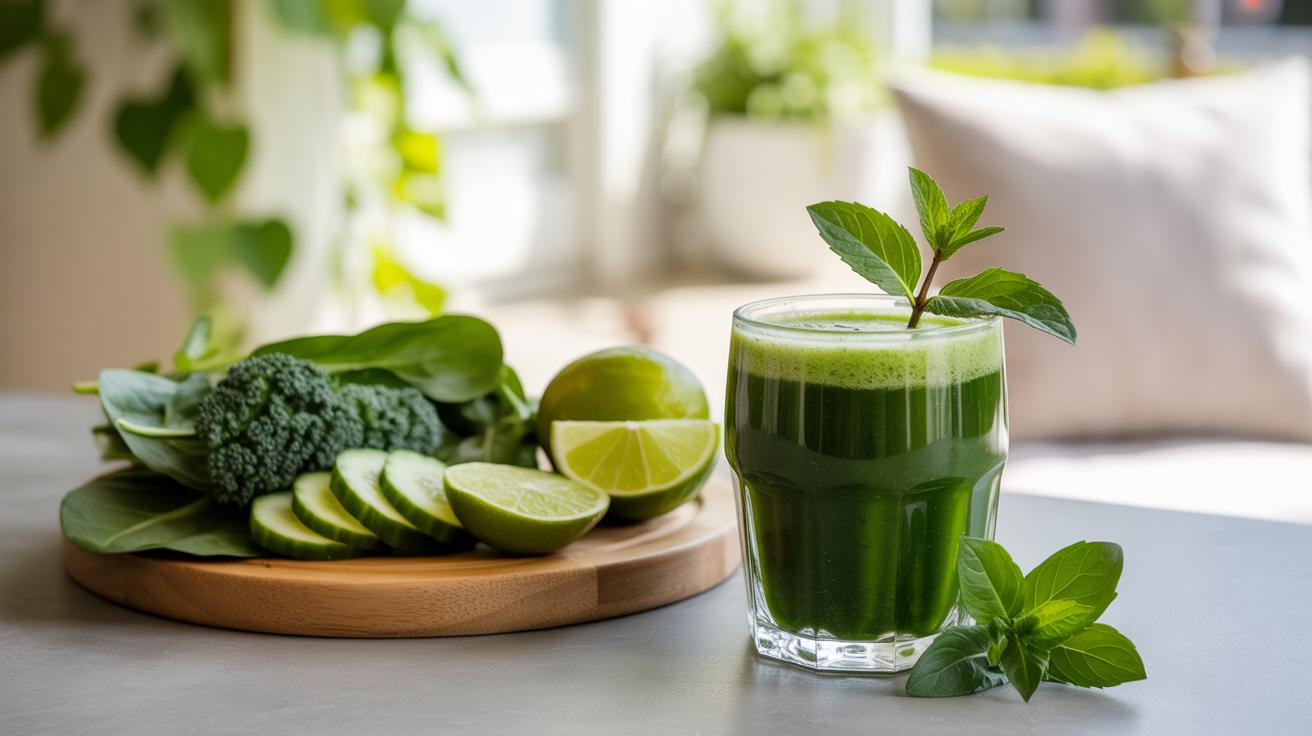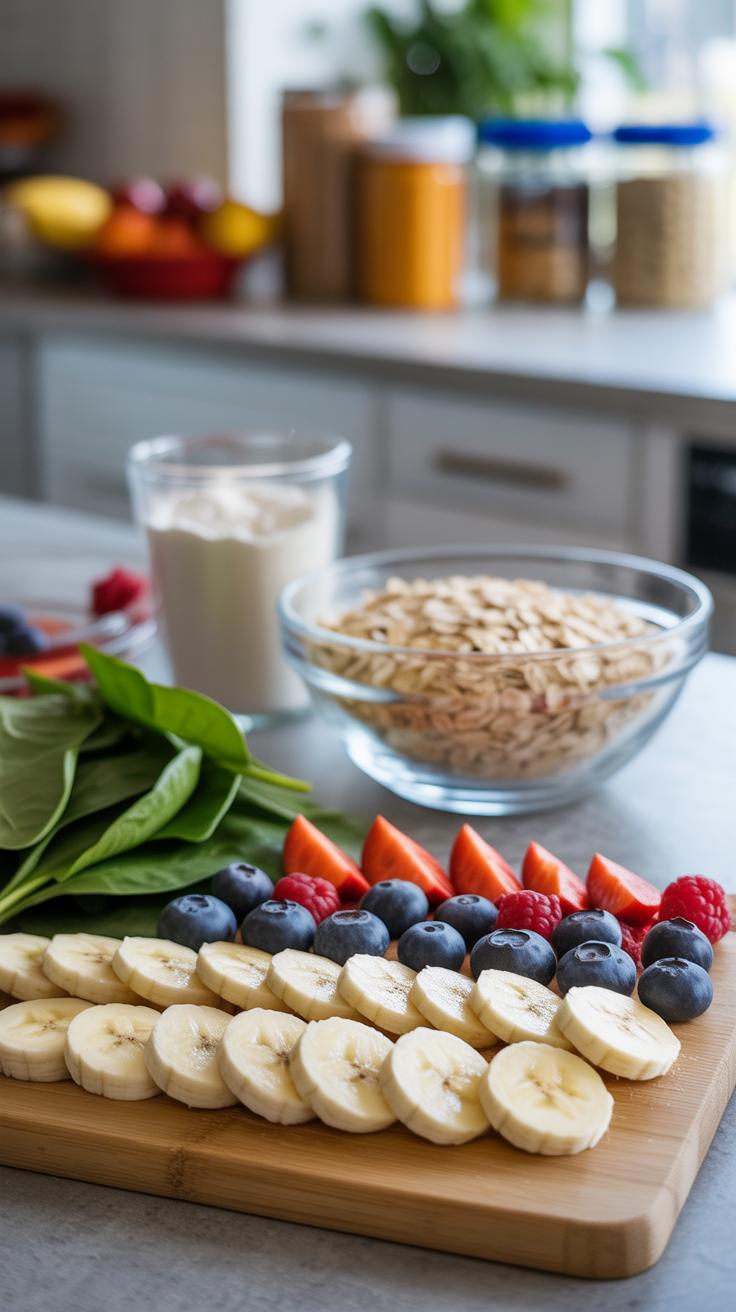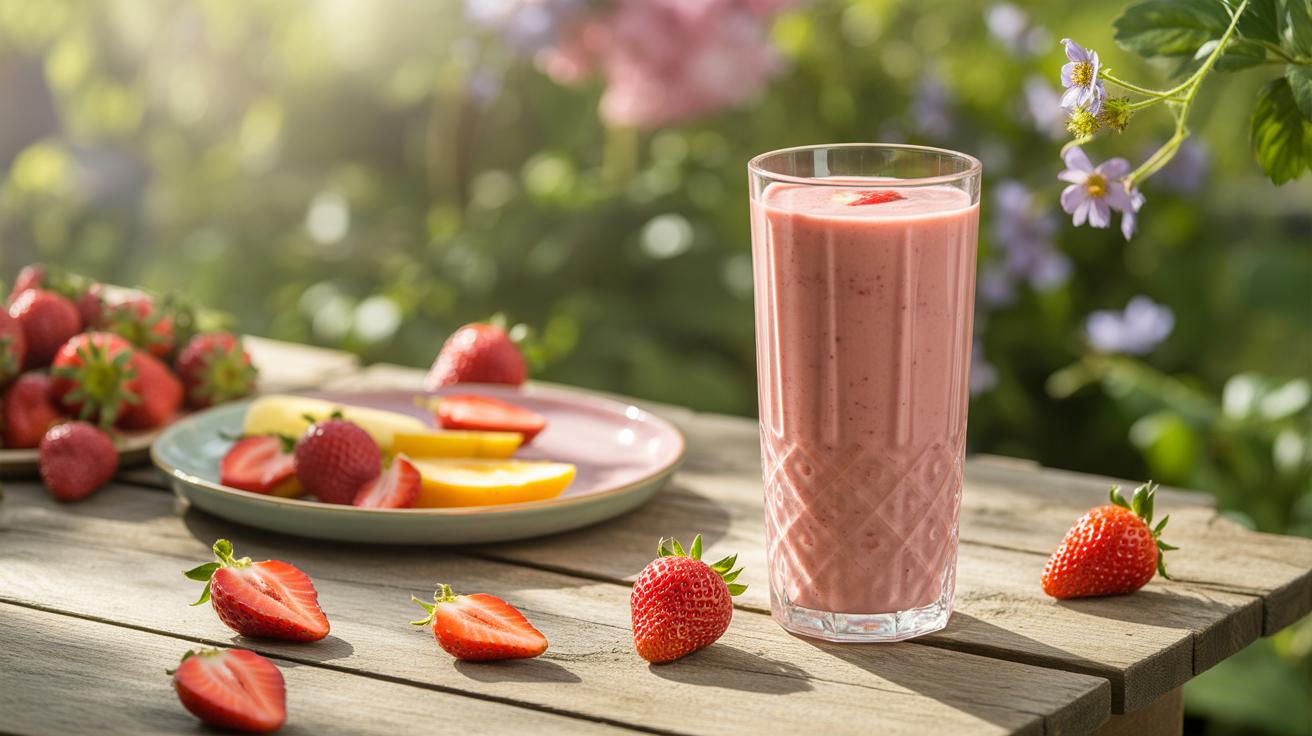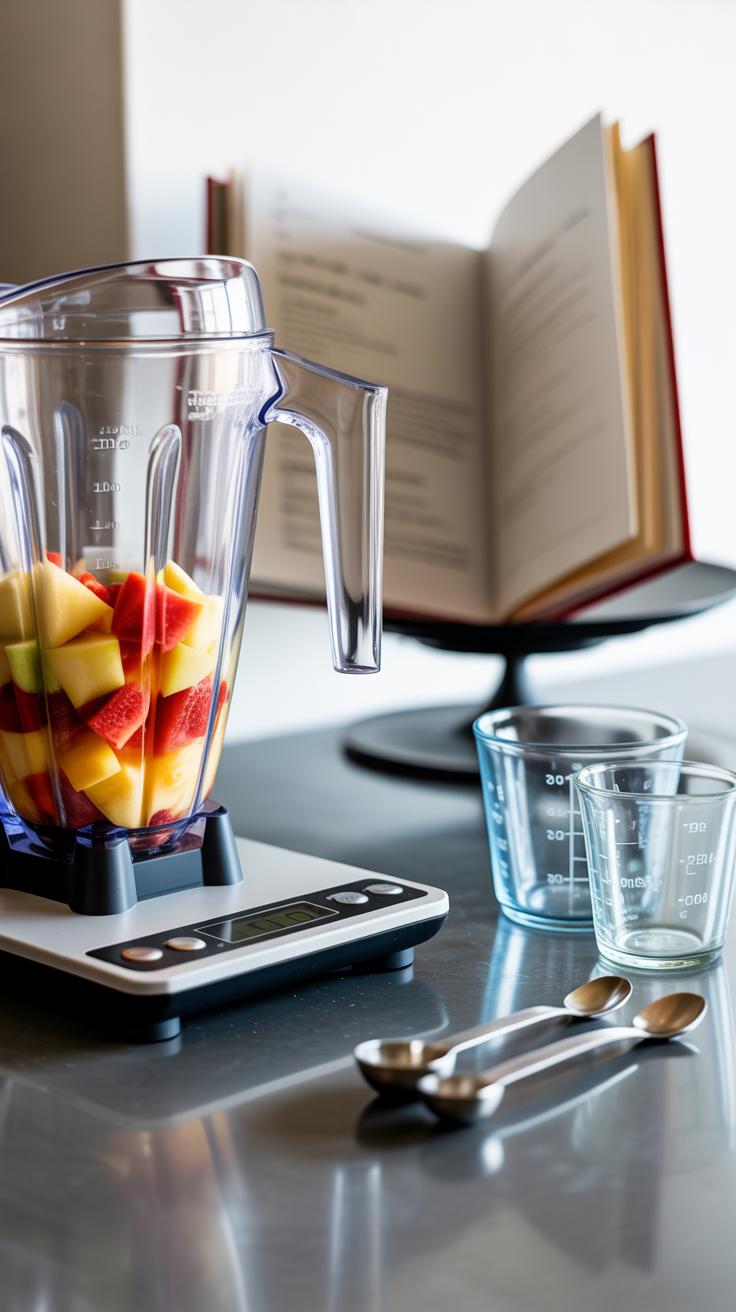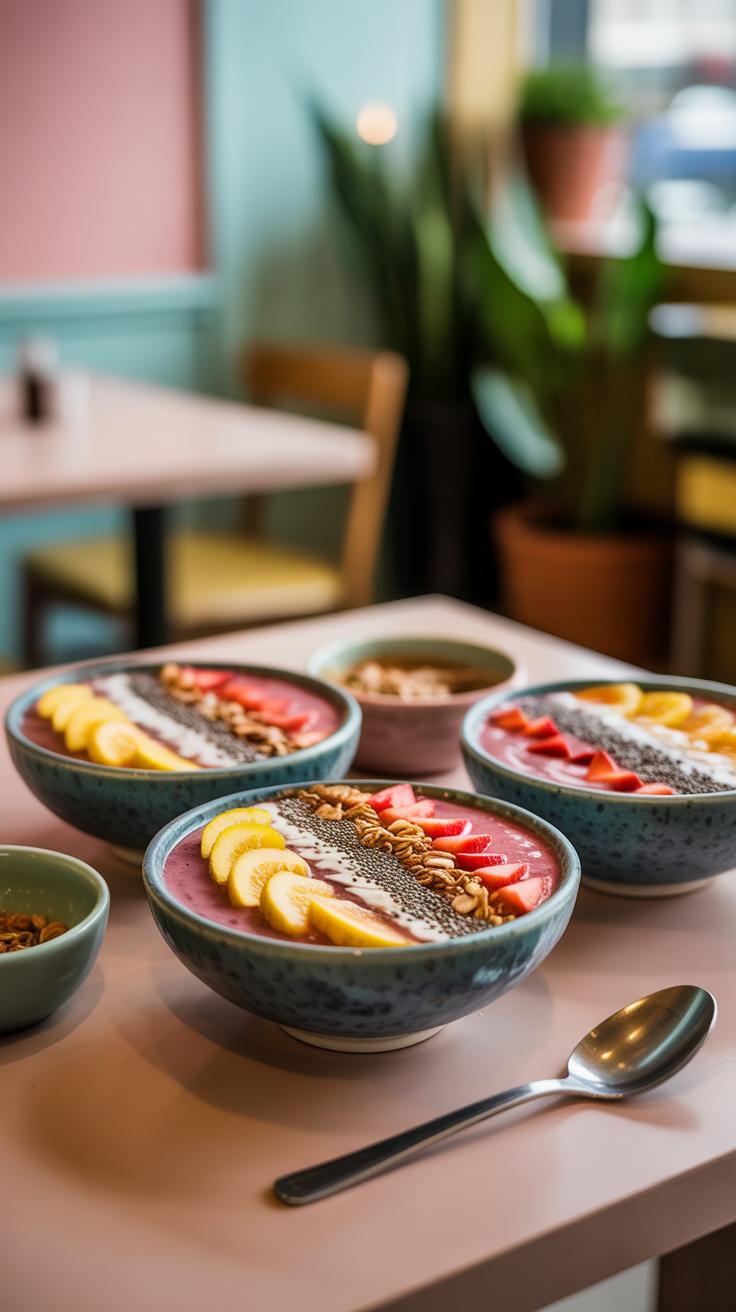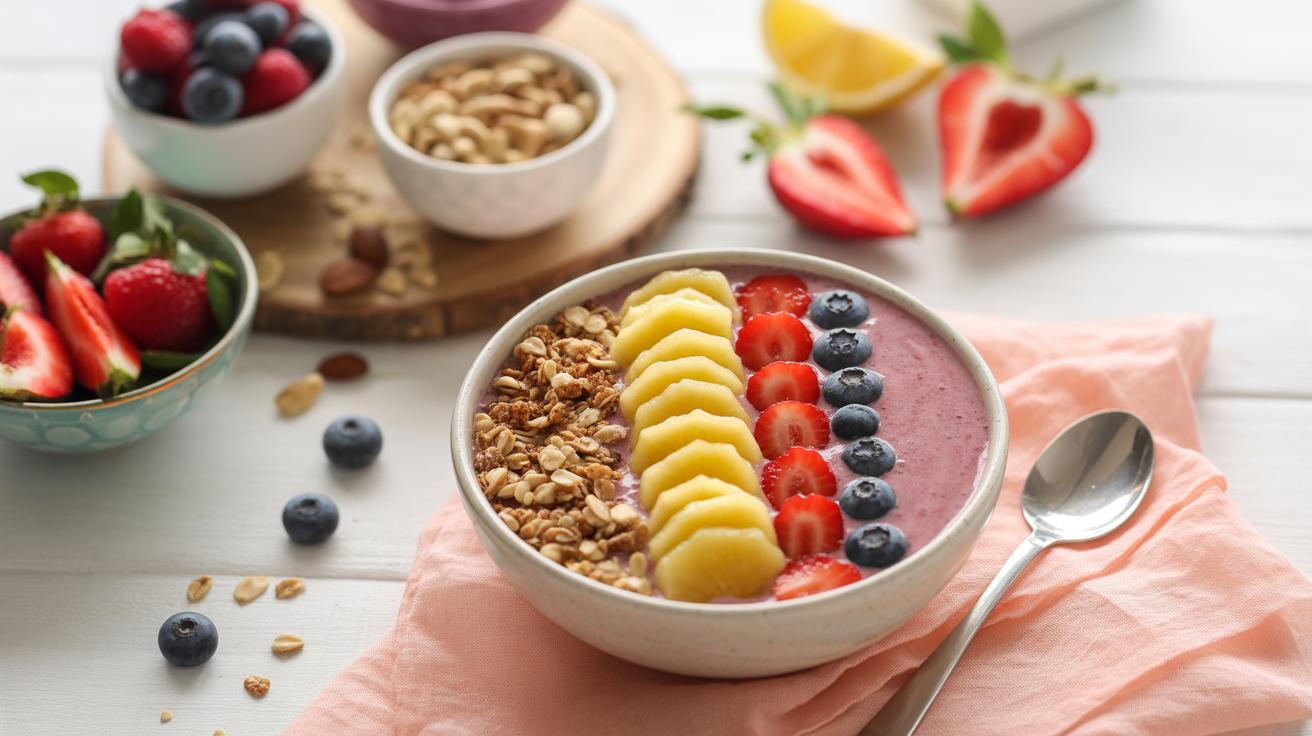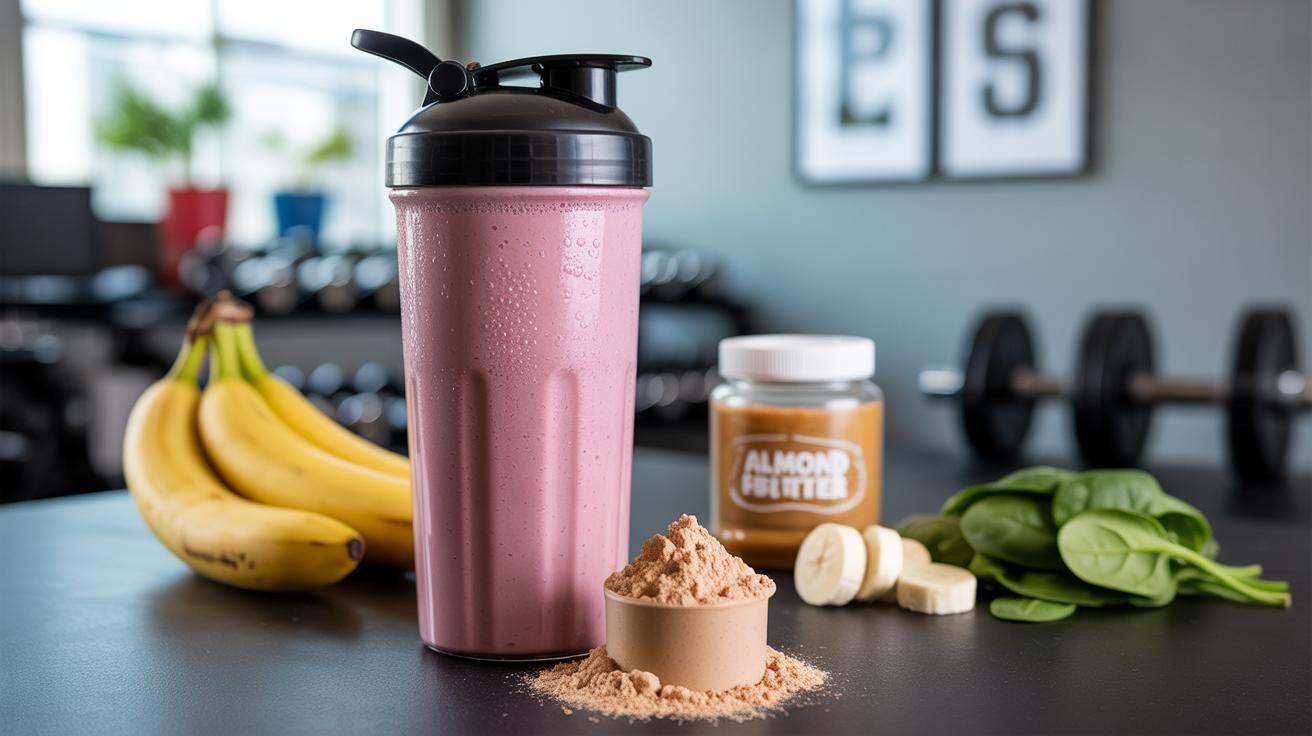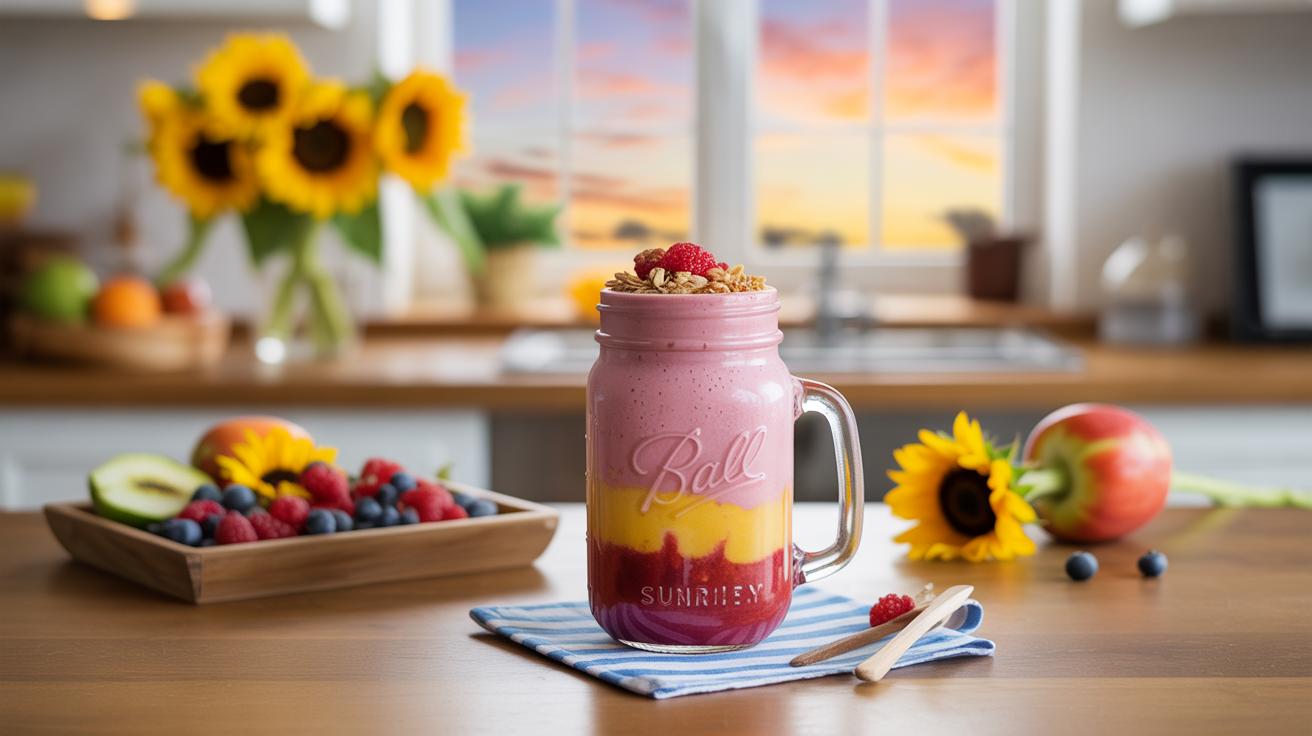Introduction
Fruit smoothies offer a quick and tasty way to get a boost of energy and nutrients. They combine fruits with liquids like juice, milk, or yogurt to create drinks that are easy to enjoy any time of the day. Whether you want a light refreshment or a meal replacement, smoothies can fit your needs.
In this article, you’ll learn different fruit smoothie recipes that bring flavor and health benefits. We’ll explore types of smoothies, how to prepare them, and creative ideas to suit your tastes. By the end, you’ll have new recipes and tips to make your own smoothies that energize and please your palate.
What are Fruit Smoothies
Fruit smoothies are simple blends of fresh or frozen fruits mixed with a liquid base, creating a drink that’s easy to consume and often packed with nutrients. At their core, they usually combine three main elements: fruits, liquids, and sometimes extras like yogurt, ice, or sweeteners. The fruits give the smoothie its flavor and vitamins, the liquid helps with blending and texture, and the optional ingredients can add creaminess or an energy boost.
What makes smoothies stand out is how flexible they are—you can toss in whatever you have on hand. Maybe it’s berries, bananas, or tropical fruits like mango. Sometimes, I find myself reaching for a handful of spinach too, just to sneak in some greens without tasting much difference.
People often drink fruit smoothies as a quick, portable way to get essential nutrients. Though they feel like treats, most fruit smoothies serve as a wholesome drink that fuels the body and hydrates it. If you think about it, they’re a convenient bridge between a snack and a meal, especially when you’re on the move or need an easy energy lift.
Basic ingredients in fruit smoothies
Picking ingredients starts with the fruits, which are nearly endless. Common picks include berries like strawberries and blueberries, bananas for creaminess, apples, peaches, or pineapple when you want something more tropical. Frozen fruits are a favorite because they give thickness and chill without watering down the smoothie.
When it comes to liquids, options vary widely:
- Water or coconut water offers hydration without extra calories.
- Milk or plant-based milks such as almond, oat, or soy add creaminess and subtle flavor.
- Fruit juices can boost sweetness but might increase sugar content.
- Yogurt, especially Greek yogurt, adds protein and a rich texture, making your smoothie more filling.
Other common additions may include ice to keep things cool and thick, protein powders for those wanting extra strength, or even seeds like chia or flax to up fiber intake. You might find yourself experimenting with nut butters or spices like cinnamon too, though that’s less typical.
Why choose fruit smoothies
People turn to fruit smoothies for several reasons, and it’s not just about taste (though they usually taste great). One big draw is convenience: smoothies can be whipped up quickly, requiring minimal prep and cleanup. When mornings get hectic, a smoothie might be the only way to grab nutrients before heading out.
Nutrition also plays a role. If you struggle to eat enough fruit daily, blending it into a drink can help. Smoothies combine fiber, vitamins, and minerals, especially when made with whole fruits rather than juices. Plus, if you add yogurt, protein powder, or healthy fats, they turn from light snacks into balanced mini-meals.
Still, not everyone drinks smoothies for health alone. Some simply enjoy the flavor variety and adaptability. You can try new fruit combos whenever boredom strikes—sometimes that’s reason enough to reach for the blender.
Different Types of Fruit Smoothies
Green Smoothies with Vegetables
Green smoothies mix fruits with leafy greens like spinach or kale, creating a blend that’s both fresh and packed with nutrients. The taste can be surprising—sometimes grassy or slightly bitter—but the sweet fruits often balance that out. I remember the first time I tried one; it wasn’t love at first sip, but after a few tries, I appreciated the subtle depth it added. These smoothies offer a good dose of fiber, vitamins, and antioxidants, which support digestion and immunity.
Common pairings include banana and apple with spinach or mango and pineapple with kale. The fruits soften the greens’ strong flavors, making it easier to enjoy. Plus, you get a hit of iron and calcium—key for energy and bone health. If you wonder whether they can really taste good, maybe start with more fruit and less greens. It’s a learning curve, but worth it, I think.
Protein and Yogurt-Based Smoothies
Smoothies with protein powder or yogurt add creaminess and keep you feeling full longer. Using protein powder, like whey or plant-based options, boosts your intake after workouts or busy mornings. I’ve noticed these smoothies feel more like a meal—they can be thick and quite satisfying. Adding yogurt, especially Greek yogurt, not only gives a tangy twist but adds probiotics, good for your gut balance.
This type often blends berries or bananas with a scoop of protein and a handful of oats or nut butter for extra fuel. What’s interesting is how protein changes texture and flavor—these blends feel richer and are less refreshing than fruit-only varieties. Still, they’re handy if you want something that keeps hunger at bay without needing extra snacks. You might find yourself experimenting with different powders and yogurts to see what fits your taste best.
Choosing the Right Ingredients
Picking fruits for your smoothie isn’t just about grabbing whatever looks good. It helps to think a bit about how different flavors work together. Sweet fruits like bananas and mango can mellow out tart ones such as berries or kiwi. Then, mild fruits like melons or cucumber can add freshness without overpowering the taste. Mixing these can give your smoothie more depth, but sometimes keeping it simple is just fine too—there’s no one right way.
When selecting liquids, water keeps things light, while milk or plant-based alternatives add creaminess and a touch of protein. Fruit juices can heighten sweetness, but they can also make smoothies too sugary if you’re not careful.
Optional add-ons like honey bring natural sweetness, nuts give crunch and healthy fats, and seeds like chia or flax boost fiber. Sometimes, I throw in a spoonful of nut butter just to see how it changes the texture and flavor—results vary, but it’s fun to try.
Think about what you want from your smoothie: Are you after a quick energy boost or a subtle flavor experience? That choice guides which ingredients make the cut.
Essential Tools and Techniques
Blenders and accessories
You’ll need a good blender. Not just any blender, though—something with enough power to crush ice and blend frozen fruit smoothly. A standard countertop blender usually does the trick. Personal blenders are handy for single servings but can struggle with thicker mixes. If you really love smoothies, maybe think about investing in one with a strong motor, say 600 watts or more. That said, sometimes a regular blender works just fine if you blend carefully.
Accessories can make your life easier. Measuring cups help keep ingredient amounts in check, especially if you want consistent texture and flavor. An ice crusher or a blender with ice-crushing blades can save you some hassle when using frozen cubes. If your blender doesn’t crush ice well, pre-crushing or using crushed ice instead of cubes will help. Also, consider having a rubber spatula nearby to scrape down the sides while blending — it’s a small thing but stops chunks from sticking.
Blending tips for ideal results
How you blend matters quite a bit. Start with liquids at the bottom—water, juice, milk, or yogurt—to help the blades move freely. Then add softer fruits, and finally the hard or frozen stuff on top. This layering helps prevent the blender from getting stuck.
Blend on low speed first to mix everything, then switch to high speed for about 30 seconds or so. But don’t overdo it—too long and you might end up with a watery smoothie rather than thick and creamy. If it isn’t thick enough, add more frozen fruit or a few ice cubes, then pulse a few times. Sometimes, I find pausing mid-blend to stir with a spatula helps, especially with dense mixtures.
Don’t rush the process. Smooth is good, but achieving the right balance between creamy and icy might take a few tries. Over time, you’ll probably figure out what sequence and timing your blender prefers.
Classic and Popular Fruit Smoothie Recipes
Banana Berry Smoothie
This banana berry smoothie is a familiar favorite that blends smooth creaminess with a burst of berry flavor. You’ll need:
- 1 ripe banana
- 1 cup mixed berries (fresh or frozen)
- 1/2 cup plain or vanilla yogurt
- 1/2 cup milk or a milk alternative
- A drizzle of honey or maple syrup if you want a touch of sweetness
The process is simple but straightforward. First, peel the banana and toss it into your blender. Add the mixed berries next—they provide that vibrant color and just the right tanginess. Pour in the yogurt and milk to help everything blend smoothly. It’s tempting to just throw everything in and go, but I think it’s better to pulse slowly at first, so the berries don’t break down too much and turn the smoothie too bitter.
Blend until creamy and smooth, about 30-45 seconds, depending on your blender. Taste it—sometimes the banana is sweet enough to skip the extra honey. If you want it colder, just add a few ice cubes or use frozen berries.
Tropical Mango Pineapple Blend
This one feels like a quick mini-vacation, with tropical sweetness coming from a mix of mango and pineapple. For this refreshing smoothie, gather:
- 1 cup ripe mango chunks (fresh or frozen)
- 1 cup pineapple chunks (fresh or frozen)
- 3/4 cup coconut milk (from a carton works fine)
- Optional: a squeeze of lime juice for some zest
Start by adding the mango and pineapple to your blender. Their natural sweetness is pretty dominant, so you often don’t need to add anything extra. The coconut milk adds a silky texture and a subtle tropical richness, making the smoothie feel a bit indulgent but still light.
Blend until smooth, which usually takes about 40 seconds or so. If you find it too thick, add a splash more coconut milk or even some water. I sometimes wonder if a little ginger might boost this recipe, but that’s just me experimenting.
Serve right away. The bright flavors wake you up without being overwhelming, making it a solid choice for mornings or an afternoon pick-me-up.
Customizing Smoothies for Your Needs
When tailoring smoothies to your specific goals, it’s mostly about choosing the right ingredients rather than following a fixed formula. Need a burst of energy? Adding chia seeds or a scoop of protein powder can help sustain your stamina throughout the day. I once tried a smoothie with just banana, spinach, and whey protein—it felt like a slow-release boost rather than a quick sugar crash.
If weight loss is on your mind, cutting down on high-calorie fruits like mango or banana and replacing them with berries or cucumber keeps calories low without sacrificing taste. Greek yogurt or a spoonful of nut butter can add creaminess and fullness, so you’re not left hungry an hour later. Sometimes, the key is just to slow down and make your smoothie filling enough, so you don’t snack mindlessly afterward.
For muscle gain, protein becomes the star player. Beyond powder, try blending in silken tofu or cottage cheese, which mix smoothly and pack a punch. Don’t shy away from healthy fats too—avocado or flaxseed help with recovery but don’t overload the calorie count too much unless you’re tracking gains carefully.
What if you want to keep calories low but still crave something satisfying? Play around with textures—iced water, sparkling water, or unsweetened almond milk dilutes calories and keeps things refreshing. Spices like cinnamon or ginger can add a kick, distracting from any flavor lost when you decrease sweetness.
Ultimately, customizing your smoothie needs some trial and error. Which combinations make you feel energized without weighing you down? It’s a bit of a personal puzzle, but the good news is smoothies are forgiving and flexible. Just tweak one ingredient at a time and notice how your body reacts.
Storing and Serving Smoothies
Keeping smoothies fresh
Storing smoothies can be a bit tricky, mainly because they tend to separate or change color after some time. If you want to keep yours fresh, refrigeration is key—try to chill your smoothie in an airtight container right after blending. Glass jars with tight lids work well because they reduce exposure to air.
Separation is common and not necessarily a sign the smoothie is bad; just a quick shake or stir before drinking usually brings it back together. Browning, especially in green or fruit-heavy drinks, often happens because of oxidation. To slow this down, consider adding a squeeze of lemon or lime juice. They have natural acids that help preserve color and freshness.
Keep your smoothies cold and consume within 24 to 36 hours to enjoy the best flavor and nutrition. Storing them frozen is possible but expect some texture changes when thawed.
Creative serving ideas
How you serve a smoothie can make a surprising difference. Presenting your drink in a wide-mouth glass or even a mason jar feels inviting. You might want to experiment with different glassware to see what fits your vibe.
Garnishes add an extra touch. Think fresh mint leaves, a slice of fruit on the rim, or a sprinkle of chia seeds or shredded coconut on top. These small details make the smoothie experience more enjoyable, almost like a mini celebration.
For mixing, I sometimes use a straw and sip slowly, letting the garnish influence the flavor with each sip. Other times, a quick stir with a long spoon helps to merge the layers created by denser ingredients that settled at the bottom.
Have you ever thought about layering different flavored smoothies in the same glass? It’s a bit of an experiment but can look impressive. It may not always blend smoothly, but sometimes that’s part of the fun—trying something a bit different than just the usual blend and go.
Smoothies From Around The World
Indian and Middle Eastern yogurt drinks
When you think of fruit smoothies, you might not immediately picture something from South Asia or the Middle East, but they have their own creamy, fruit-based beverages that share a lot with what we consider smoothies. Lassi is one of the most well-known—this Indian drink blends yogurt with fruit like mango, sweet spices, or outright saltiness, depending on where you are.
Lassi’s texture is thicker than a typical western smoothie but still refreshing and rich. It’s interesting how the tang of yogurt changes the drink’s vibe completely. In the Middle East, similar yogurt drinks appear, often combined with rose water, mint, or pomegranate. These blends feel lighter but don’t skimp on flavor.
These drinks emphasize yogurt’s natural probiotics, making them not just tasty but good for your gut too. Maybe that’s why they remain so popular on hot days—not just for energy but digestion as well. Do you think a smoothie’s healthiness changes with its ingredients or its origins?
Other global fruit beverages
There are fruit-based drinks worldwide that resemble smoothies yet differ in taste and preparation. Take sharbat, for example, a sweet, often chilled drink from the Middle East and South Asia. Sharbat mixes fruit juices with sugar, sometimes herbs or flower essences like rose or saffron, resulting in a much lighter, waterier drink than your standard smoothie.
Unlike smoothies, sharbat rarely uses blender-pureed whole fruit or yogurt. Instead, it relies on concentrated syrups or fresh juice, so the texture doesn’t thicken much. This means you get a burst of flavor without the creamy, sometimes heavy feel of a smoothie.
Maybe this shows that not every fruity drink aims to fill or energize in the same way—some are meant to refresh and hydrate quickly. It makes me wonder, what do you prefer: a smooth, filling blend or a light, flavorful sip? Each has its own place on the fruit-drink spectrum.
Conclusions
Fruit smoothies are simple to make and can be tailored to your dietary desires. From green smoothies with leafy vegetables to creamy yogurt blends, the options are wide. Using fresh fruits and balancing ingredients gives you drinks that satisfy hunger and refresh your body.
Try the recipes shared and experiment with your favorites. Smoothies offer a chance to add more nutrients and flavor to your daily routine. Start blending your way to feeling energized and enjoying tasty fruit creations.

